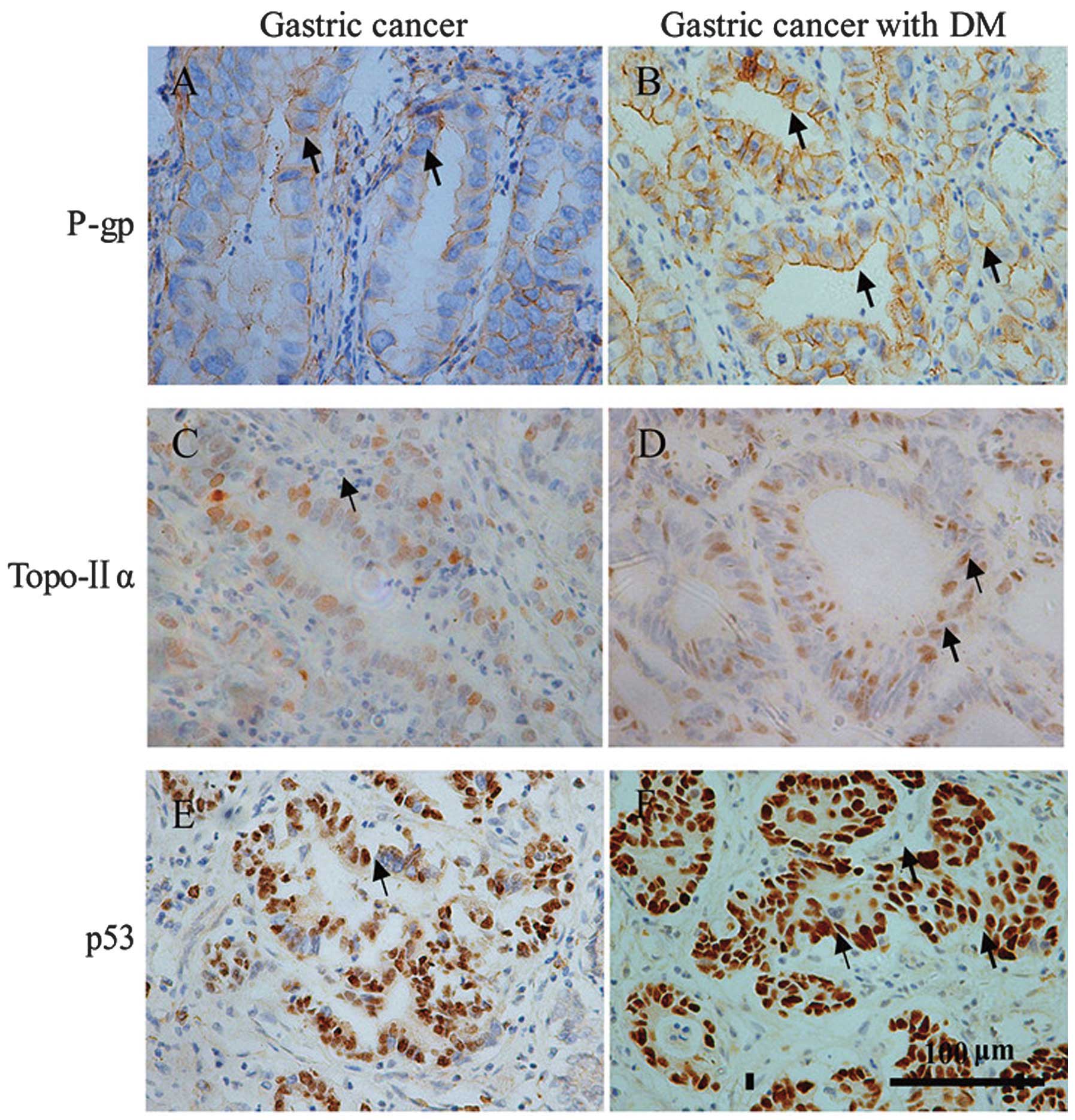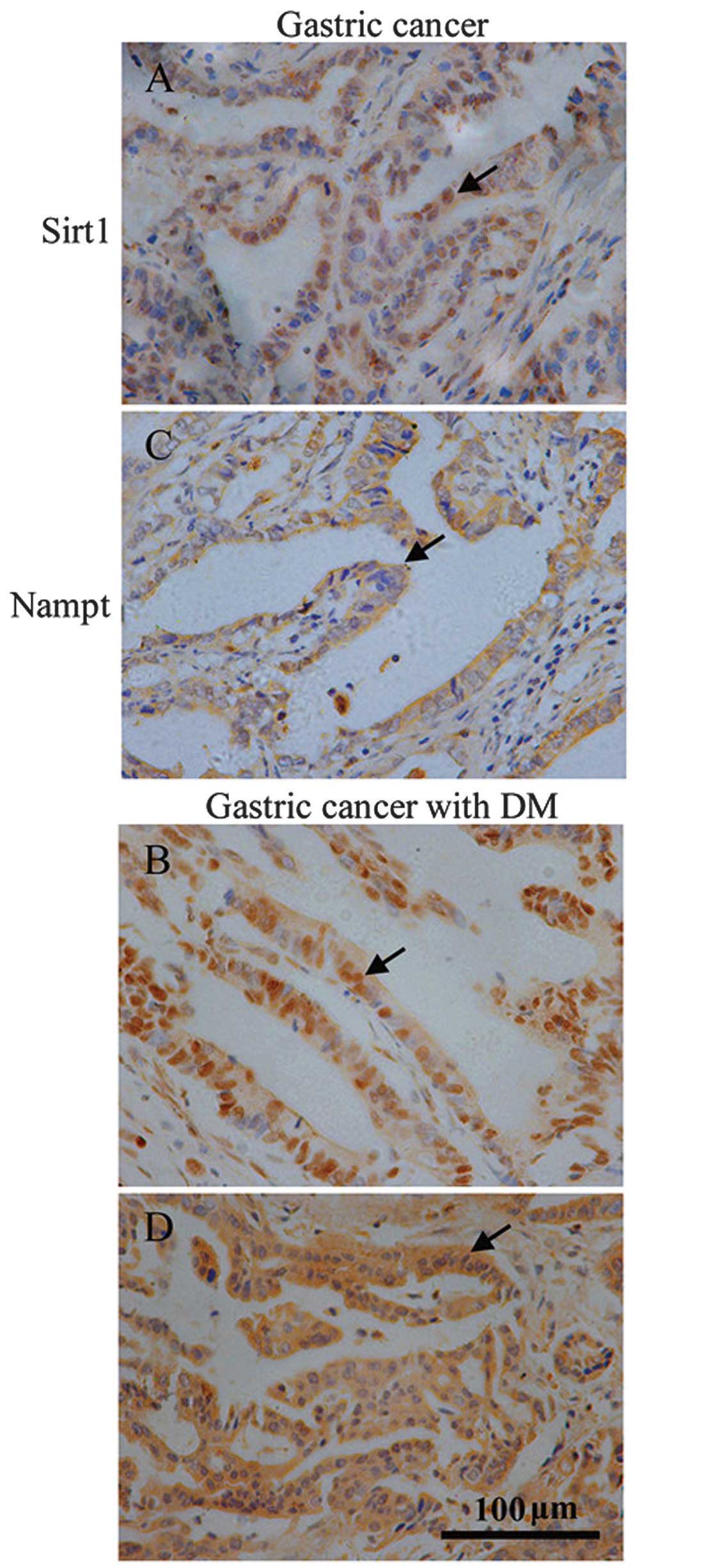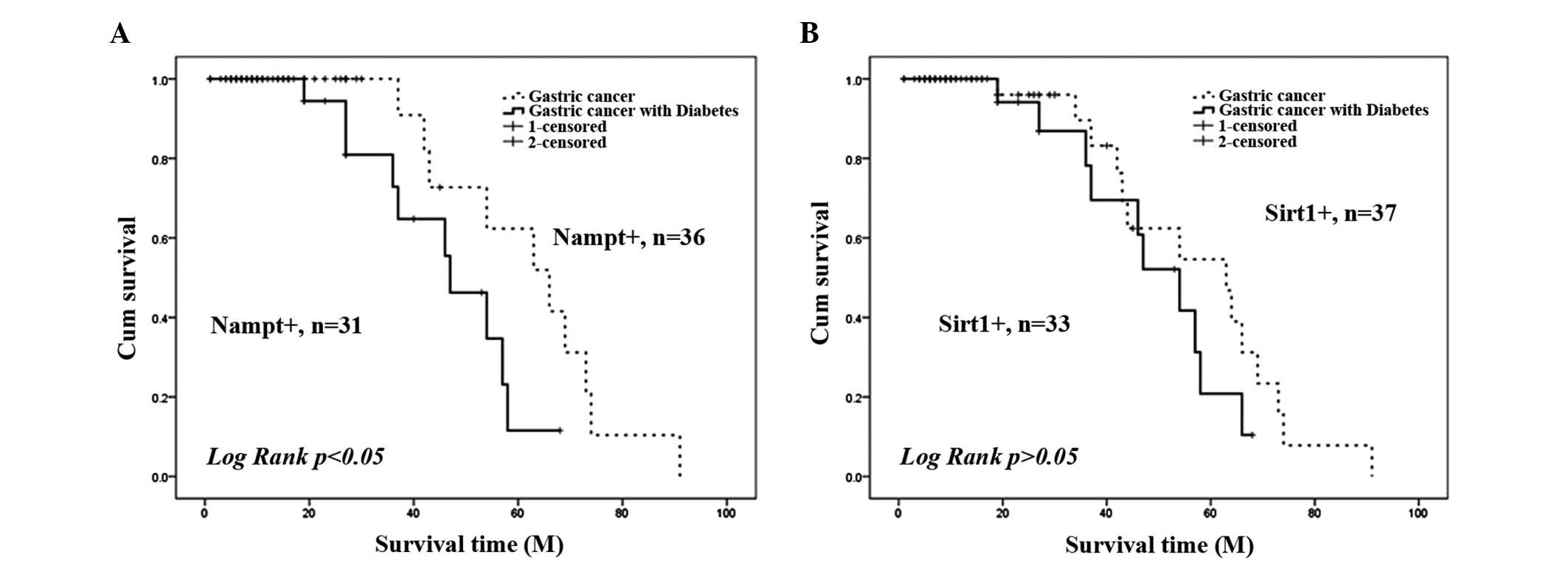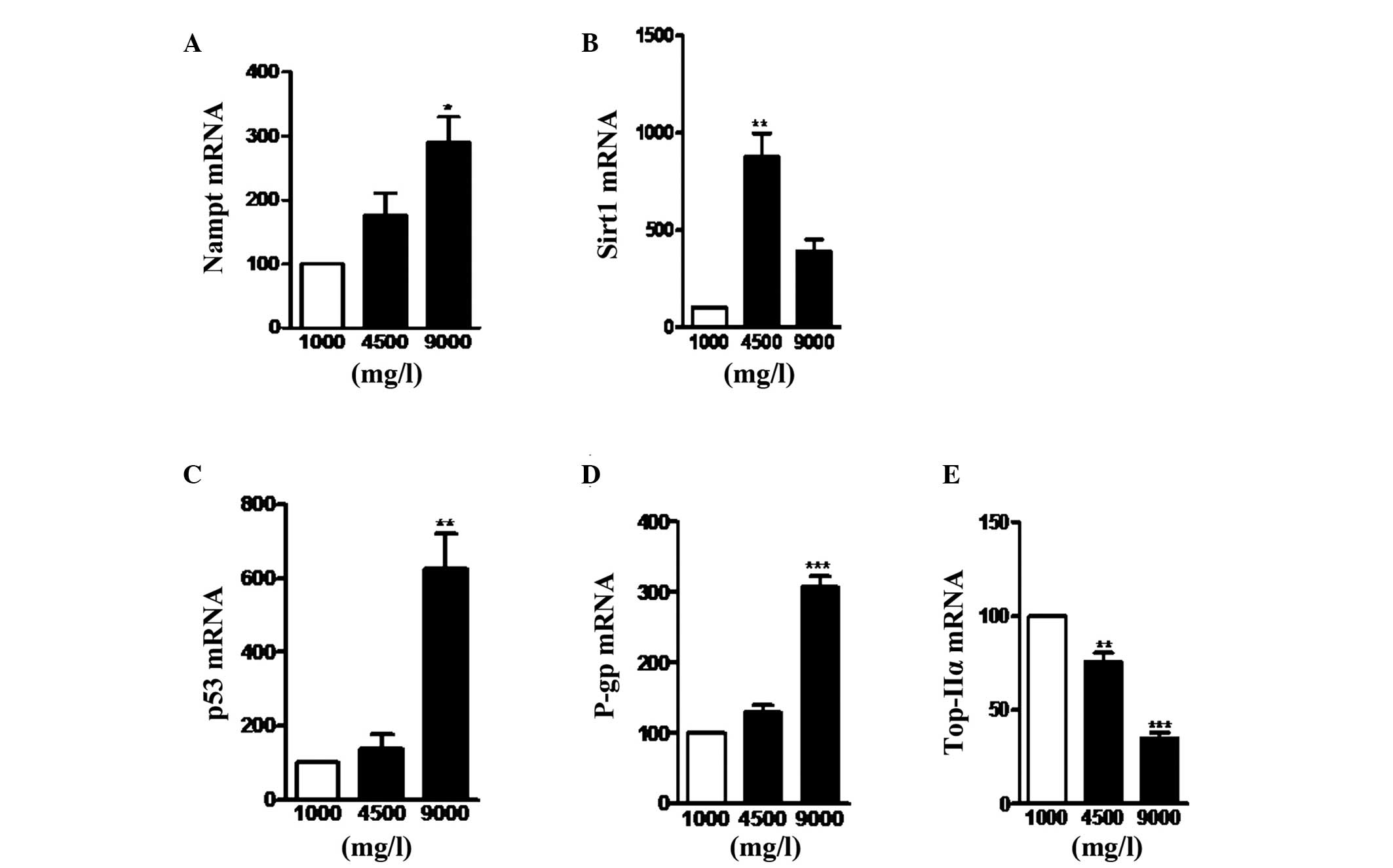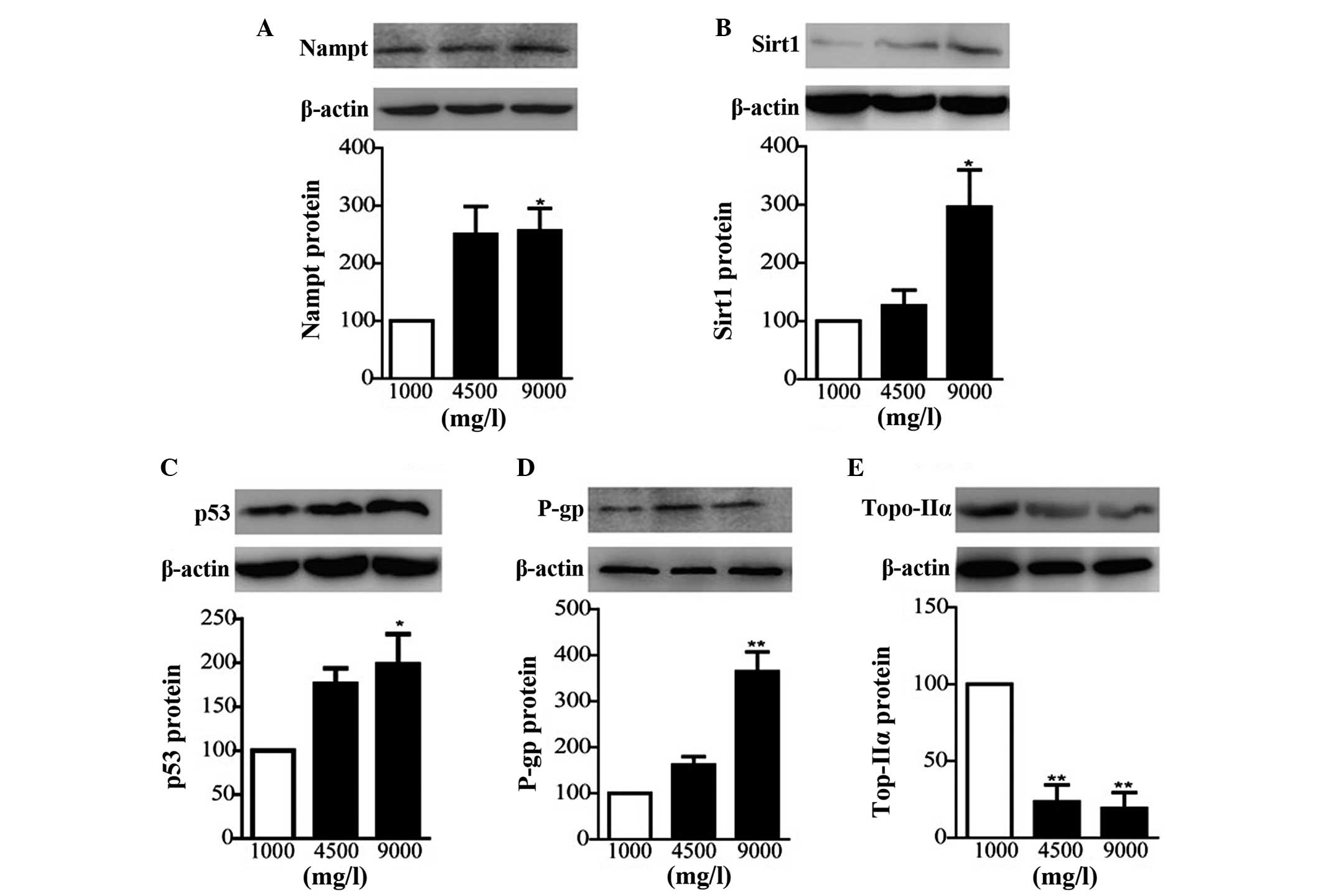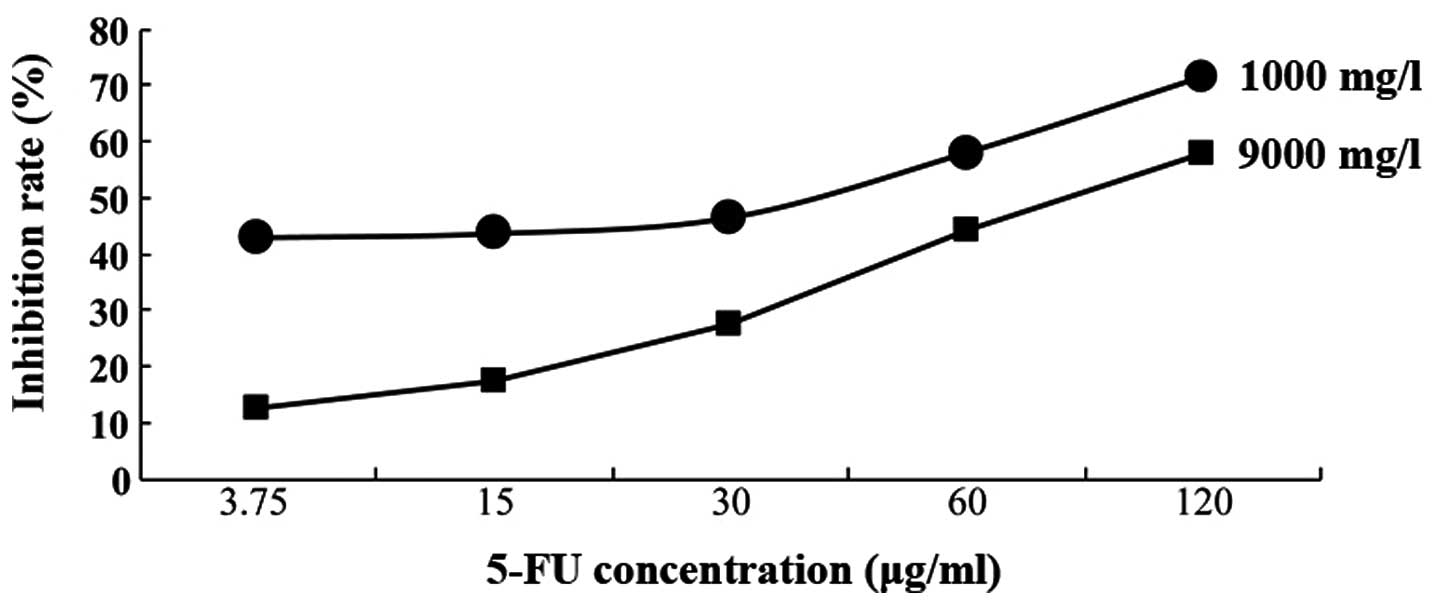|
1
|
Ferlay J, Shin HR, Bray F, et al:
Estimates of worldwide burden of cancer in 2008: GLOBOCAN 2008. Int
J Cancer. 127:2893–2917. 2010. View Article : Google Scholar
|
|
2
|
Hartgrink HH, Jansen EP, van Grieken NC,
et al: Gastric cancer. Lancet. 374:477–490. 2009. View Article : Google Scholar : PubMed/NCBI
|
|
3
|
Zhang D and Fan D: New insights into the
mechanisms of gastric cancer multidrug resistance and future
perspectives. Future Oncol. 6:527–537. 2010. View Article : Google Scholar : PubMed/NCBI
|
|
4
|
Azoulay L, Yin H, Filion KB, et al: The
use of pioglitazone and the risk of bladder cancer in people with
type 2 diabetes: nested case-control study. BMJ. 344:e36452012.
View Article : Google Scholar : PubMed/NCBI
|
|
5
|
Richardson LC and Pollack LA: Therapy
insight: Influence of type 2 diabetes on the development, treatment
and outcomes of cancer. Nat Clin Pract Oncol. 2:48–53. 2005.
View Article : Google Scholar : PubMed/NCBI
|
|
6
|
Garten A, Petzold S, Körner A, et al:
Nampt: linking NAD biology, metabolism and cancer. Trends
Endocrinol Metab. 20:130–138. 2009. View Article : Google Scholar :
|
|
7
|
Feng YH, Velazquez-Torres G, Gully C, et
al: The impact of type 2 diabetes and antidiabetic drugs on cancer
cell growth. J Cell Mol Med. 15:825–836. 2011. View Article : Google Scholar
|
|
8
|
Chiarugi A, Dölle C, Felici R, et al: The
NAD metabolome - a key determinant of cancer cell biology. Nat Rev
Cancer. 12:741–752. 2012. View
Article : Google Scholar : PubMed/NCBI
|
|
9
|
Bi TQ and Che XM: Nampt/PBEF/visfatin and
cancer. Cancer Biol Ther. 10:119–125. 2010. View Article : Google Scholar : PubMed/NCBI
|
|
10
|
Bi TQ, Che XM, Liao XH, et al:
Overexpression of Nampt in gastric cancer and chemopotentiating
effects of the Nampt inhibitor FK866 in combination with
fluorouracil. Oncol Rep. 26:1251–1257. 2011.PubMed/NCBI
|
|
11
|
Burger H, Foekens JA, Look MP, et al: RNA
expression of breast cancer resistance protein, lung
resistance-related protein, multidrug resistance-associated
proteins 1 and 2, and multidrug resistance gene 1 in breast cancer:
correlation with chemotherapeutic response. Clin Cancer Res.
9:827–836. 2003.PubMed/NCBI
|
|
12
|
Bajrami I, Kigozi A, Van Weverwijk A, et
al: Synthetic lethality of PARP and NAMPT inhibition in
triple-negative breast cancer cells. EMBO Mol Med. 4:1087–1096.
2012. View Article : Google Scholar : PubMed/NCBI
|
|
13
|
Cha EJ, Noh SJ, Kwon KS, et al: Expression
of DBC1 and SIRT1 is associated with poor prognosis of gastric
carcinoma. Clin Cancer Res. 15:4453–4459. 2009. View Article : Google Scholar : PubMed/NCBI
|
|
14
|
Feng AN, Zhang LH, Fan XS, et al:
Expression of SIRT1 in gastric cardiac cancer and its
clinicopathologic significance. Int J Surg Pathol. 19:743–750.
2011. View Article : Google Scholar : PubMed/NCBI
|
|
15
|
Imai S: Dissecting systemic control of
metabolism and aging in the NAD World: the importance of SIRT1 and
NAMPT-mediated NAD biosynthesis. FEBS Lett. 585:1657–1662. 2011.
View Article : Google Scholar : PubMed/NCBI
|
|
16
|
Patel ST, Mistry T, Brown JE, et al: A
novel role for the adipokine visfatin/pre-B cell colony-enhancing
factor 1 in prostate carcinogenesis. Peptides. 31:51–57. 2010.
View Article : Google Scholar
|
|
17
|
Tanigawa N and Fujii H: Detection of
P-glycoprotein and its clinical significance. Nihon Rinsho.
55:1064–1068. 1997.In Japanese. PubMed/NCBI
|
|
18
|
Ezoe S: Secondary leukemia associated with
the anti-cancer agent, etoposide, a topoisomerase II inhibitor. Int
J Environ Res Public Health. 9:2444–2453. 2012. View Article : Google Scholar : PubMed/NCBI
|
|
19
|
Alagoz M, Gilbert DC, El-Khamisy S, et al:
DNA repair and resistance to topoisomerase I inhibitors:
mechanisms, biomarkers and therapeutic targets. Curr Med Chem.
19:3874–3885. 2012. View Article : Google Scholar : PubMed/NCBI
|
|
20
|
Karim S and Ali A: Correlation of p53
over-expression and alteration in p53 gene detected by polymerase
chain reaction-single strand conformation polymorphism in
adenocarcinoma of gastric cancer patients from India. World J
Gastroenterol. 15:1381–1387. 2009. View Article : Google Scholar : PubMed/NCBI
|
|
21
|
Hollstein M, Sidransky D, Vogelstein B and
Harris CC: p53 mutations in human cancers. Science. 253:49–53.
1991. View Article : Google Scholar : PubMed/NCBI
|
|
22
|
Renehan AG, Yeh HC, Johnson HA, Wild SH,
Gale EA and Møller H: Diabetes and Cancer Research Consortium:
Diabetes and cancer (2): evaluating the impact of diabetes on
mortality in patients with cancer. Diabetologia. 55:1619–1632.
2012. View Article : Google Scholar : PubMed/NCBI
|
|
23
|
Colmers IN, Bowker SL, Tjosvold LA, et al:
Insulin use and cancer risk in patients with type 2 diabetes: a
systematic review and meta-analysis of observational studies.
Diabetes Metab. 38:485–506. 2012. View Article : Google Scholar : PubMed/NCBI
|
|
24
|
Vigneri P, Frasca F, Sciacca L, Pandini G
and Vigneri R: Diabetes and cancer. Endocr Relat Cancer.
16:1103–1123. 2009. View Article : Google Scholar : PubMed/NCBI
|
|
25
|
Shikata K, Ninomiya T and Kiyohara Y:
Diabetes mellitus and cancer risk: review of the epidemiological
evidence. Cancer Sci. 104:9–14. 2013. View Article : Google Scholar
|
|
26
|
Li HJ, Che XM, Zhao W, et al: Diet-induced
obesity potentiates the growth of gastric cancer in mice. Exp Ther
Med. 4:615–620. 2012.PubMed/NCBI
|
|
27
|
Paschou P, Kukuvitis A, Yavropoulou MP, et
al: Genetic variation in the visfatin (PBEF1/NAMPT) gene and type 2
diabetes in the Greek population. Cytokine. 51:25–27. 2010.
View Article : Google Scholar : PubMed/NCBI
|
|
28
|
Imai S: The NAD World: a new systemic
regulatory network for metabolism and aging - Sirt1, systemic NAD
biosynthesis, and their importance. Cell Biochem Biophys. 53:65–74.
2009. View Article : Google Scholar :
|
|
29
|
Yi J and Luo J: SIRT1 and p53, effect on
cancer, senescence and beyond. Biochim Biophys Acta.
1804:1684–1689. 2010. View Article : Google Scholar : PubMed/NCBI
|
|
30
|
Zhu H, Xia L, Zhang Y, et al: Activating
transcription factor 4 confers a multidrug resistance phenotype to
gastric cancer cells through transactivation of SIRT1 expression.
PLoS One. 7:e314312012. View Article : Google Scholar : PubMed/NCBI
|
|
31
|
Liang XJ, Finkel T, Shen DW, Yin JJ,
Aszalos A and Gottesman MM: SIRT1 contributes in part to cisplatin
resistance in cancer cells by altering mitochondrial metabolism.
Mol Cancer Res. 6:1499–1506. 2008. View Article : Google Scholar : PubMed/NCBI
|
|
32
|
Menssen A, Hydbring P, Kapelle K, et al:
The c-MYC oncop-rotein, the NAMPT enzyme, the SIRT1-inhibitor DBC1,
and the SIRT1 deacetylase form a positive feedback loop. Proc Natl
Acad Sci USA. 109:E187–E196. 2012. View Article : Google Scholar
|
|
33
|
Kojima K, Ohhashi R, Fujita Y, et al: A
role for SIRT1 in cell growth and chemoresistance in prostate
cancer PC3 and DU145 cells. Biochem Biophys Res Commun.
373:423–428. 2008. View Article : Google Scholar : PubMed/NCBI
|
|
34
|
Fujita Y, Kojima K, Hamada N, et al:
Effects of miR-34a on cell growth and chemoresistance in prostate
cancer PC3 cells. Biochem Biophys Res Commun. 377:114–119. 2008.
View Article : Google Scholar : PubMed/NCBI
|
|
35
|
de Figueiredo-Pontes LL, Pintão MC,
Oliveira LC, et al: Determination of P-glycoprotein, MDR-related
protein 1, breast cancer resistance protein, and lung-resistance
protein expression in leukemic stem cells of acute myeloid
leukemia. Cytometry B Clin Cytom. 74:163–168. 2008. View Article : Google Scholar : PubMed/NCBI
|



